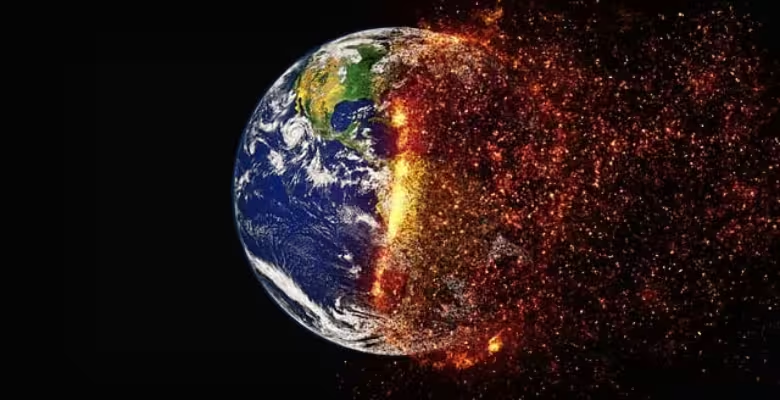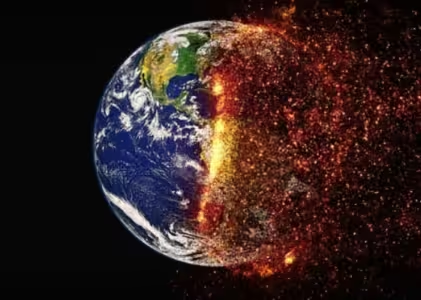The Science Behind Global Warming – Can you even envision lying in bed one morning, waking up to extreme weather, catastrophically flooded coastal cities, and fully decimated ecosystems? Scary, right? But that’s where we are going to head if we continue to ignore what currently is going on with global warming.
This is not a problem of the distant future for future generations; this is real life, now, and it involves every one of us. Ever wonder why the weather seems to be so unpredictable these days-or seems to report a lot more disasters linked to climate-related causes? You are not alone. I’m here to break it down in terms that make sense, so you understand what is at stake and why this matters to you.
The Science Behind Global Warming: What’s It Really About?
In very simple words, it would mean the gradual increase in the average surface temperature of the Earth contributed by human activities. It is more from the burning of fossil fuels.
That’s the emission to the atmosphere of certain kinds of greenhouse gases, particularly carbon dioxide and methane, that retain significant amounts of heat radiated from the Sun; this normally would reflect some of this into space, but with more greenhouse gases, it traps the heat, thus raising global temperatures.
A couple of degrees warmer does not sound so bad, you think. But herein lies the thing: even slight changes in global temperatures can have dramatic effects on our climate systems.
Think of Earth’s climate as a well-oiled machine: you mess with one part, and the whole thing may just go haywire. Which pretty much is exactly what we are seeing right now: stronger hurricanes, longer droughts, and running wildfires out of control-and more.
Greenhouse Effect: How It Works
OK, now, precisely how does this greenhouse effect work? Picture Earth sort of as a greenhouse. Energy from the sun manages to make it through the atmosphere, heating the planet. Some of that energy gets reflected out towards space, and much of it gets taken in by the surface of Earth, thereby warming it.
Then the Earth releases this energy as infrared radiation, or heat, but instead of all that heat simply escaping into space, it gets trapped by greenhouse gases.
This is one of those processes necessary to life on Earth-without it Earth would be too cold to support human life. But here’s the problem: human activities have thrown this delicate balance off. More greenhouse gases mean heat is trapped and the planet unnaturally warms.
Why Should You Care?
OK, I see science sometimes seems abstract, but the results of global warming are anything but. Already, rising temperatures are causing devastating impacts around the world, and they’re affecting you. It’s so easy to think, “Well, I’m just one person; what can I do?” But it takes an understanding of the problem to take the first meaningful step toward changing it.
Here’s where it gets personal: Feel the summers getting hotter where you are. Are the storms more intense?
Those are symptoms of global warming. It’s not just polar bears and ice caps, though even that’s important also your food, your home, and your job. Severe weather destroys infrastructure, endangers supply chains, and threatens whole economies. And worst of all, usually, it is those who bear the least responsibility-low-income communities, developing nations-who get hurt the most.
Expert opinions: what science has to say
Decades of research by scientists around the world have given way to an unmistakable fact: human activities are responsible for global warming. The confidence level is such that in its periodic assessment report, the IPCC entity comprising the top climate scientists of the world-asserts it is “unequivocal” that human influence has warmed the atmosphere, ocean, and land. It is overwhelming data, crystal clear consensus: We are causing it, and the time to act is now.
But, as one of the world’s leading climatologists, Dr Michael Mann, puts it succinctly: “We’re headed for a future where weather extremes become the norm. If we don’t drastically reduce our carbon emissions, we may well see a temperature increase that renders large parts of the planet uninhabitable.”
Case Study of The Science Behind Global Warming
Who could forget Australia’s terrifying wildfires that started in 2019 and just went on into 2020? It burned millions of acres, and destroyed thousands of homes.
It was so hot it created its weather systems what’s called a fire-induced thunderstorm. And experts have said that global warming is a major contributing factor. With rising temperatures and long droughts, the region was a tinderbox waiting for a spark to ignite.
But that is not the scariest thing about it: these fires are no sort of natural freak; everywhere, one sees longer, stronger fire seasons from California across the Amazon into parts of Europe. And just for as long as the Earth’s temperature rises, so will this frequency.
More From Us
How Air Pollution Affects Human Health
The Role of Wetlands In Flood Prevention
Effects of Deforestation on Biodiversity
How to Implement Sustainable Practices in Urban Planning
Frequently Asked Questions on The Science Behind Global Warming
1. How does global warming differ from climate change?
That is a good question. While global warming describes an increase in the average surface temperature of Earth, climate change includes any process leading to changes in weather patterns, rainfall, winds, or extreme events. Now, let me put it this way: whereas global warming is part of climate change, and climate change in its entirety does accommodate something other than rising temperatures.
2. Is It Too Late to Stop Global Warming?
Nope, it’s not too late but we are beyond the tipping point. The sooner we cut carbon emissions, the better the chance to avoid the worst impacts. Every fraction of a degree counts-even though it is impossible to stop completely, we may still be able to stay clear from some of the most disastrous effects.
3. How does global warming affect the oceans?
Global warming raises the ocean temperature and melts the ice caps, adding to higher sea levels. That is a big deal since higher sea levels simply mean more flooding in coastal areas. Warmer oceans fuel stronger hurricanes and have impacts on marine ecosystems; hence, they threaten biodiversity.
4. What Can I Do to Help?
So many things one can do-from reducing carbon footprint by using energy-efficient appliances to eating less meat, driving less, and supporting policies that take on climate change. After all, it is the sum of individual actions that counts.
Next Steps: Could We Stop This?
If it all seems overwhelmingly daunting, you’re anything but alone. The good news: solutions are increasingly affordable and widespread wind, solar, and geothermal renewable energy sources; proliferating electric cars; and companies that, finally, are taking the issue seriously.
But individual actions have their limits. It is time there was a systemic change-a reduction in emissions-which would require government, corporations, and individuals to take an active part in protecting our planet. That means fighting for policies that hold polluters responsible, investing in clean energy, and reconsidering how we use our resources.
Conclusion on The Science Behind Global Warming
Nor is it just a problem for scientists and activists, or of some generation in the far future. It is our problem, our choice, our time. If we do nothing, then the future world that we bequeath to future generations will be radically unlike the one we know – in many respects unimaginably so. The science is clear, the warnings dire, but the solutions are within reach.
But with the knowledge of the science behind global warming, you are already one step ahead. It’s about time all of us acted on behalf of the former.


